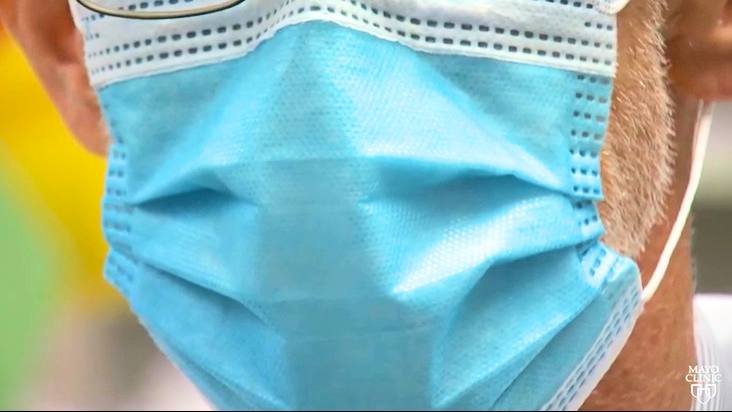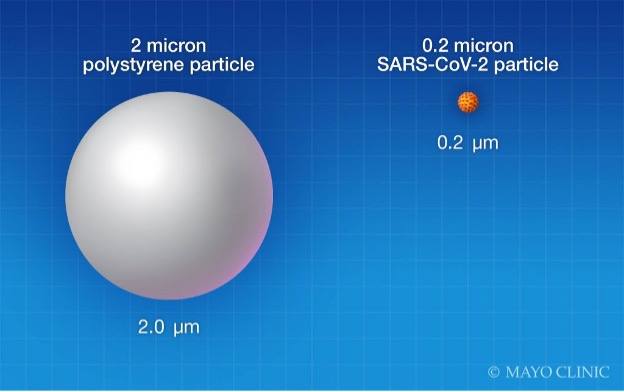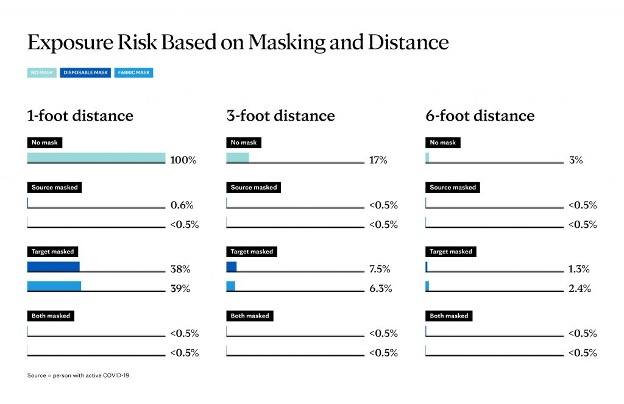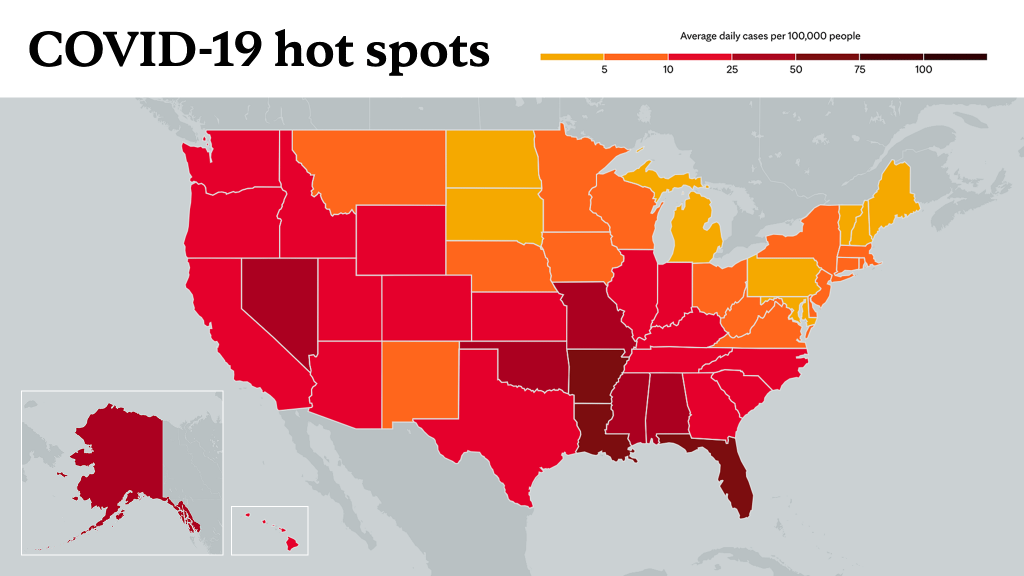
ROCHESTER, Minn. — The Centers for Disease Control and Prevention (CDC) recommended this week that people vaccinated against COVID-19 resume wearing masks in public indoor spaces in areas of the United States where the virus is spreading. “Appropriate masking in addition to vaccination remain the best methods to help protect individuals from the Coronavirus,” says Gregory Poland, M.D., an infectious disease expert at Mayo Clinic.
In fact, published data from Mayo Clinic researchers have found that appropriate masking and physical separation reduces the exposure of individuals to respiratory droplets that spread the virus and a physical separation of 6 feet reduces particle counts to near baseline levels. The findings, published in Mayo Clinic Proceedings, strongly support the protective value and effectiveness of widespread mask use, maintaining physical distance and vaccination in helping to stop the spread of the COVID-19 virus.
Watch: Dr. Elie Berbari and Dr. Matthew Callstrom discuss mask study.
Journalists: Broadcast-quality soundbites are in the downloads at the end of the post along with b-roll of the aerosol study. Please "Courtesy: Elie Berbari, M.D./Infectious Diseases/Mayo Clinic" and "Matthew Callstrom, M.D./Radiology/Mayo Clinic."
"Our masking study emulated the production of respiratory droplets by using mannequins, that were masked and other mannequins that were unmasked," says Elie Berbari, M.D., chair of the department of infectious diseases at Mayo Clinic in Rochester, Minnesota. “We measured the spread of those droplets at various distances.”
Researchers measured how effectively masks blocked the number of aerosol particles from a masked source, simulating an individual with a COVID-19 infection, and they simulated the risk of an individual contracting COVID-19 when they were masked.
"We found the most important measure for reducing the risk of exposure to COVID-19 is to wear a mask," says Matthew Callstrom, M.D., Ph.D., chair of the department of radiology at Mayo Clinic in Minnesota. "We found that both disposable paper medical masks and two-layer cloth masks were effective in reducing droplet transmission and we did not find a difference between mask types in terms of how well they blocked aerosol particles emitted by the wearer."

2-micron particles represent an aerosol particle that could contain many coronavirus particles.
"The most common mechanism for COVID-19 transmission is through respiratory droplets which are larger than aerosols and are more easily blocked with masks," says Dr. Callstrom.
A second part of the study measured aerosol particle counts from a source to a target from one foot to six feet apart, at one-foot intervals. Researchers found that overall, particle counts were reduced with increasing distance which supports current CDC guidance of maintaining physical separation of six feet from others.

The graph shows the percentage of particle counts across various distances of 1 foot to 6 feet when the source, target and both are masked using disposable and cloth masks.
"I think we had some knowledge about the importance of masks and there's been a number of studies that have shown masks are effective in blocking viruses, but what's really important here is just how effective masking is when done by both parties," says Dr. Berbari.
Watch: See the mannequins in action.
He says additional measures to reduce the risk of transmission include frequent hand washing and use hand sanitizer before and after meals, and after removing masks, and honoring posted room capacities in busy areas.
"We found objectively that masks are critically important for protecting yourself and the people around you," says Dr. Callstrom. "If you're wearing a mask, you're protecting others. If they're wearing masks, they're protecting you."
###
About Mayo Clinic
Mayo Clinic is a nonprofit organization committed to innovation in clinical practice, education and research, and providing compassion, expertise and answers to everyone who needs healing. Visit the Mayo Clinic News Network for additional Mayo Clinic news. For information on COVID-19, including Mayo Clinic’s Coronavirus Map tracking tool, which has 14-day forecasting on COVID-19 trends, visit the Mayo Clinic COVID-19 Resource Center.
Media contact:
- Joe Dangor, Mayo Clinic Public Affairs, newsbureau@mayo.edu
For the safety of its patients, staff and visitors, Mayo Clinic has strict masking policies in place. Anyone shown without a mask was recorded prior to COVID-19 or recorded in an area not designated for patient care, where social distancing and other safety protocols were followed.
For the safety of its patients, staff and visitors, Mayo Clinic has strict masking policies in place. Anyone shown without a mask was either recorded prior to COVID-19 or recorded in a nonpatient care area where social distancing and other safety protocols were followed.
Information in this post was accurate at the time of its posting. Due to the fluid nature of the COVID-19 pandemic, scientific understanding, along with guidelines and recommendations, may have changed since the original publication date.
For more information and all your COVID-19 coverage, go to the Mayo Clinic News Network and mayoclinic.org.








